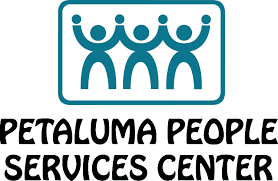Nonprofit Asset Management for Sustainable Companies
Sustainvest brings years of dedication, experience and passion to our work with mission-driven organizations. We work with multiple 501c3 organizations whose goal is to align their assets and endowments in accordance to their Investment Policy Statement (IPS). Working with executive directors, board members and financial committees to understand the investment goal, risk tolerance, and time horizon is key. We understand the challenges faced from having multiple stakeholders and will help create an investment framework and take the worry about managing assets for the organization out of your hands and into our fiduciary duty.
Our nonprofit investment management solution is designed for steady long-term growth with downside protection (staying in line with the Investment Policy Statement. Portfolios are constructed based on the specific needs of each organization and impact profile. If wanted, we can align the mission of the non-profit with its investments. For example, we can put higher allocations into strong gender diversity firms and funds for organizations whose mission is involved in human rights. Or we can exclude tobacco companies for 501c3’s that are focused on public health. We can design a portfolio that fits your mission. Some of the non-profits we manage endowments for include:

- The Kansha Foundation
- Global Exchange
- Wilderness Youth Project (WYP)
- Petaluma People Services Center (PPSC)
Our services include
- Diversified portfolios designed for steady long-term growth with downside protection
- Portfolio construction to align your organization’s investments with your investment policy (IPS)
- ESG investing with carbon conscious and impact investment options available for organizations concerned about alignment with social and environmental goals.
- Stock donation assistance to allow your organization to accept in-kind donations
- Strategies based on risk, time horizons, and organizational values to establish and maintain strategic alignment of your investments
- Periodic reviews and quarterly reporting to Board or Investment Committee to ensure all stakeholders are properly informed
Asset Management Fees (annual) for Nonprofit Organizations (501c3)
Accounts Under $100,000: 0.90%
From $100,000-$1,000,000: 0.65%
Next $1,000,000-$3,000,000: 0.40%
Above $3,000,000: 0.25%
Feel free to schedule an introductory call to discuss this service.
Frequently Asked Questions (FAQ)
How do nonprofits invest their money?
Nonprofit organizations can invest their money in a variety of ways, including by opening a brokerage account. This enables nonprofits to receive investment securities as a form of charitable gifts.
What is a nonprofit investment policy?
A nonprofit investment policy aims to establish responsible investing standards and practices for the organization. Nonprofit funds management falls under a fiduciary duty called Duty of Care, requiring boards to guard the nonprofit’s finances and additional financial assets. This careful financial management practice enables a more sufficient long-term outlook for the organization.
Do nonprofits pay capital gains taxes on investments?
Nonprofits are usually organized under Section 501(c)(3) which makes them largely exempt from most forms of federal taxes.
What is nonprofit risk management?
Nonprofit risk management involves balancing risks and opportunities in a way that improves the organization. This includes assessment of finances, volunteer screening, and reduction of liabilities. Nonprofit risk management should promote a safer, more productive environment for all involved.
How much should nonprofits invest?
It’s generally advised that nonprofits keep about six months of operating expenses in reserve to avoid over-investing. The nonprofit should project future cash flows into and out of its portfolio to determine how aggressively it can invest.
What is the importance of an investment portfolio for a non-profit organization?
Non-profits can utilize an investment portfolio to help them grow. When used in tandem with other growth measures, like fundraising, the investment portfolio can help the organization edge closer to long-term operational viability and sustainability.
